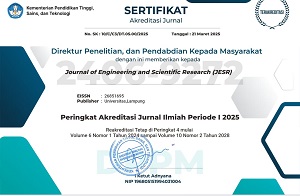Social Capital, Entrepreneurship and Rural Development
DOI:
https://doi.org/10.23960/jesr.v1i2.29 - Abstract View: 403Keywords:
migrant worker, social capital, entrepreneurship, rural developmentAbstract
Arjowilangun Village is one of the most significant areas of origination in the Malang Regency for Indonesian migrant workers aiming to work overseas. The remittance sent by Indonesian migrant workers can be utilised to support the Designative program, by establishing and developing entrepreneurship. The growth and development of entrepreneurship can be formed from the
participation of the village community. Community participation in developing independent entrepreneurship can in turn boost village development. In line with Indonesian culture, rural communities still put forward kinship, trust, mutual cooperation, networking and high social norms (social capital component). This research aims to identify the social capital of retired
Indonesian migrant workers and their decision to start business entrepreneurship. The results of the Social Network Analysis (SNA) as identified through three approaches: rate of participation, density and centrality showed that 14 respondents had the potential to be key figures in spreading information to increase community participation in village development. While the results of the correlation analysis indicate that the decision to start a business were influenced by the high value of their social capital, higher social capital can encourage the community to become entrepreneurs, enabling them to have a positive influence on village development.
Downloads







